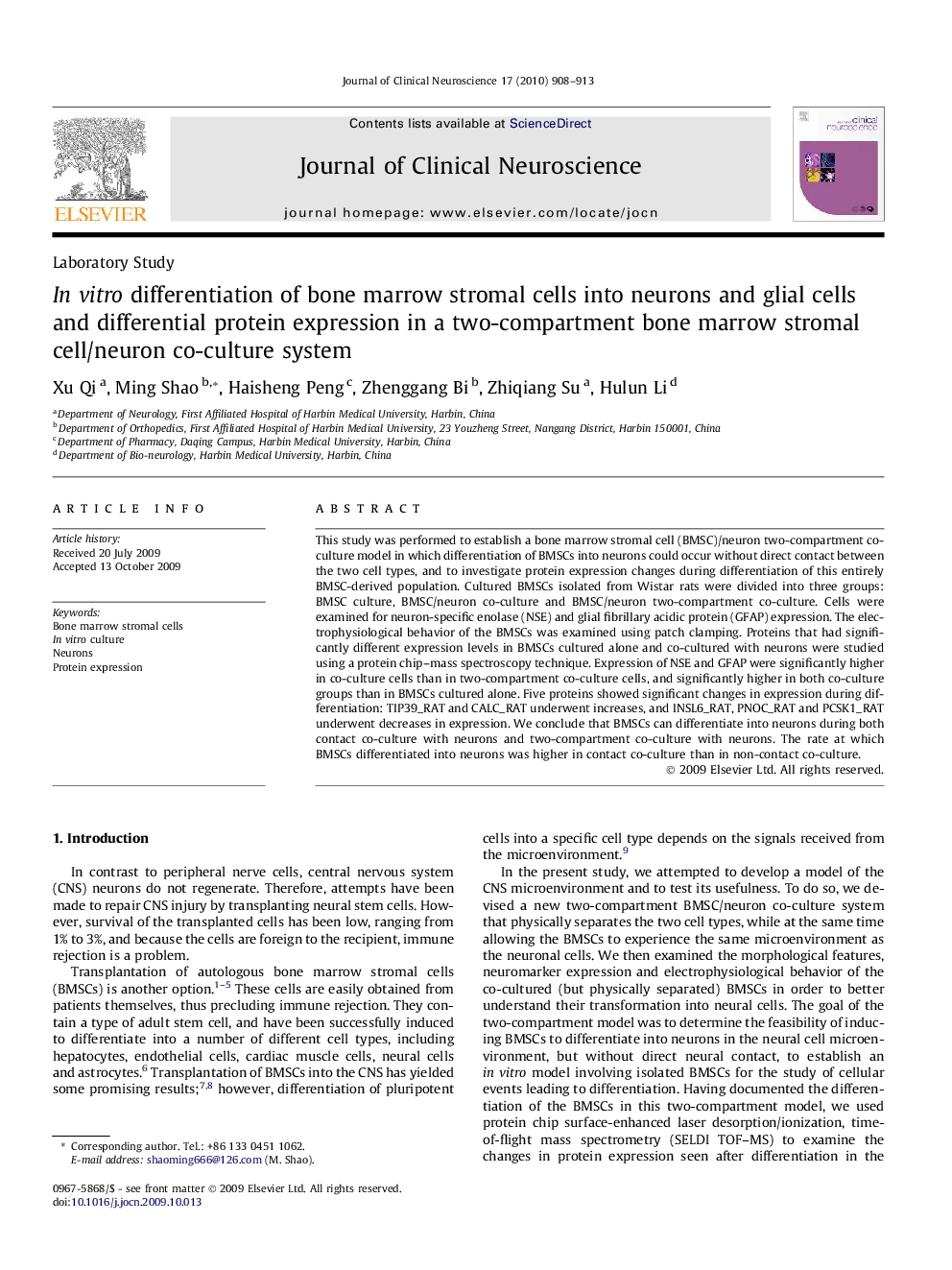| Article ID | Journal | Published Year | Pages | File Type |
|---|---|---|---|---|
| 3060985 | Journal of Clinical Neuroscience | 2010 | 6 Pages |
This study was performed to establish a bone marrow stromal cell (BMSC)/neuron two-compartment co-culture model in which differentiation of BMSCs into neurons could occur without direct contact between the two cell types, and to investigate protein expression changes during differentiation of this entirely BMSC-derived population. Cultured BMSCs isolated from Wistar rats were divided into three groups: BMSC culture, BMSC/neuron co-culture and BMSC/neuron two-compartment co-culture. Cells were examined for neuron-specific enolase (NSE) and glial fibrillary acidic protein (GFAP) expression. The electrophysiological behavior of the BMSCs was examined using patch clamping. Proteins that had significantly different expression levels in BMSCs cultured alone and co-cultured with neurons were studied using a protein chip–mass spectroscopy technique. Expression of NSE and GFAP were significantly higher in co-culture cells than in two-compartment co-culture cells, and significantly higher in both co-culture groups than in BMSCs cultured alone. Five proteins showed significant changes in expression during differentiation: TIP39_RAT and CALC_RAT underwent increases, and INSL6_RAT, PNOC_RAT and PCSK1_RAT underwent decreases in expression. We conclude that BMSCs can differentiate into neurons during both contact co-culture with neurons and two-compartment co-culture with neurons. The rate at which BMSCs differentiated into neurons was higher in contact co-culture than in non-contact co-culture.
